Gonatus
Tsunemi Kubodera, F. G. Hochberg, Richard E. Young, and Michael Vecchione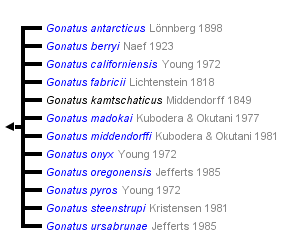


This tree diagram shows the relationships between several groups of organisms.
The root of the current tree connects the organisms featured in this tree to their containing group and the rest of the Tree of Life. The basal branching point in the tree represents the ancestor of the other groups in the tree. This ancestor diversified over time into several descendent subgroups, which are represented as internal nodes and terminal taxa to the right.

You can click on the root to travel down the Tree of Life all the way to the root of all Life, and you can click on the names of descendent subgroups to travel up the Tree of Life all the way to individual species.
For more information on ToL tree formatting, please see Interpreting the Tree or Classification. To learn more about phylogenetic trees, please visit our Phylogenetic Biology pages.
close boxIntroduction
Gonatus, the most speciose genus in the family, has its highest diversity in the high North Pacific. These squids reach a maximum length of 39 cm ML.
Brief diagnosis:
A gonatid ...
- with one or more hooks in median line on tentacular club.
Characteristics
v- Arms
- Hooks in two medial series on arms I-III.
- Tentacles
- Tentacles present in subadults.
- Tentacular club with one or more hooks in median line; one greatly enlarged.
- Proximal locking-apparatus of club with suckers and knobs medial to 4-6 large ridges and grooves, and usually several smaller ones.
- Head
- Radula with 5 teeth in transverse row.
- Mantle
- Posterior tip of mantle muscle separable from fins (not confirmed in most species). The tip of the tail (see arrow below) in Gonatus spp. is loosely attached to the mantle. The photograph below shows the fins apparently separating from the mantle tip. Although not visible in the photograph, transparent integument does extend between the tip of the mantle and the fins. The tip of the fins can also curve ventrally beneath the mantle tip. Presumably this unusual flexibility of the tip of the muscular mantle and fins increases manuverability.
- Fins
- Fins sagittate, drawn out posteriorly into a short tail.
- Photophores
- Ocular photophores present only in G. pyros.
Comments
Many of the species characteristics are found on the tentacles. The tentacles are complex and for descriptive purposes the club and stalk are divided into various zones, regions and series as follows:

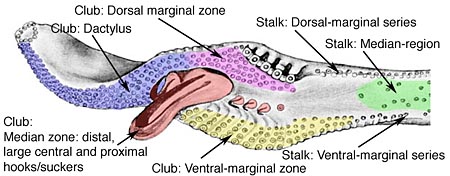
Figure. Oral view of the club and distal stalk of G. californiensis showing the terminology (much of it color coded) used in describing the tentacle. Drawing modified from Young (1972).
The following table compares some characteristics of subadult species of Gonatus. The most useful character states are indicated in bold-red. The table doesn't separate all species.
| Species / Character | Habitat | Ocular light organs | Proximal club hooks | Distal club hook | Medial suckers of tentacular stalk | Suckers on club | Club suckers of dorsal- and ventral marginal zones merge proximally. | Arm II< III length | Club length |
| G. antarcticus | Antarctic waters | No | Yes | Yes | 120-140 | 250-315 | No | 40-50% ML | 16-17% ML |
| G. berryi | North Pacific | No | Yes | Yes | 0-2 | 159-181 | No | 60-70% GL | 30-37% GL |
| G. californiensis | North Pacific | No | Yes | Yes | 40-80 | 215-270 | No | 46-53% GL | 17-24% GL |
| G. fabricii | North Atlantic | No | Yes | Yes | 38-109 | 155-229 | No | 53-59% GL | 12-20% GL |
| G. madokai | North Pacific | No | Yes | Yes | Many | ? | Yes | 90% ML | 20% ML |
| G. middendorffi | North Pacific | No | No | Yes | Few | ? | No | 50% ML | 10% ML |
| G. onyx | North Pacific | No | No | No | 0-27 | 160-200 | No | 48-54% GL | 20-25% GL |
| G. oregonensis | North Pacific | No | Yes | Yes | 70 | 295-370 | No | 59-63% ML | 21-30% ML |
| G. pyros | North Pacific | Yes | Yes | Yes | 50-125 | 151-184 | No | 60-70% GL | 20-25% GL |
| G. steenstrupi | North Atlantic | No | Yes | Yes | 75-165 | 190-225 | No | 50-70% GL | 20-36% GL |
| G. ursabrunae* | North Pacific | No | ? | ? | ? | ? | ? | 42-56% ML | 13-25% ML |
*Known only from juveniles but with distinctive relative sucker sizes on arms and club dactylus.
Behavior
Some, at least, Gonatus spp. exhibit a "Parachutte posture" (see photographs below) similar to that seen is some other MBARI photographs of oceanic squids, which presumably reduces the sinking rate. In the upper left photograph, the squid is just entering into the posture. In the upper right photograph, the squid is in the posture and the squid is motionless with arms, tentacles and fins spread wide and the squid horizontally oriented. In the bottom photograph, the squid is just coming out of the posture. The squid held the posture for about 20 seconds. Presumably it would hold the it longer if not disturbed by the ROV.
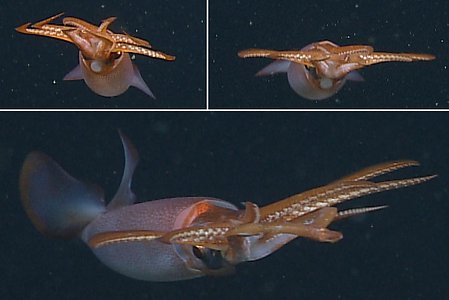
Figure. Anterior and anterolateral views of Gonatus sp. (possibly G. onyx) in the parachute posture. The photographs were taken in situ from an MBARI ROV at a depth of 578 m (daytime) in Monterey Bay, © 2013 MBARI.
Gonatus spp. often swim with their tentacle clubs locked together. The clubs are often locked both at the base of the clubs (carpal locking apparatuses) and at the tips of the club (presumably the circle of suckers that form the terminal pad). At the carpal locking apparatus we assume that the suckers involved of one club grasp the corresponding knobs of the other club. The terminal pad, however, has suckers but no knobs. The following photographs suggest how the latter lock is formed.

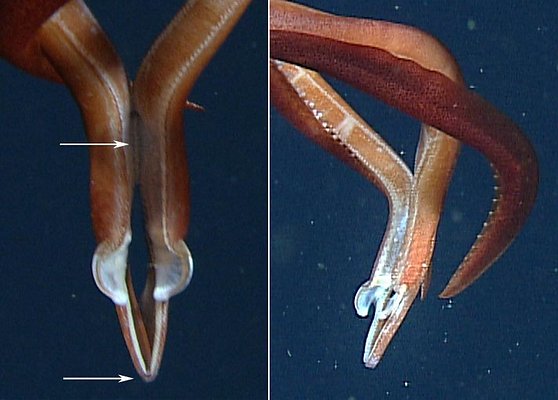
Figure. Two views of the clubs of the same Gonatus sp. locked together. Left - The carpal areas are clearly solidly locked together (upper arrow) while at the club tips one terminal pad seems to attach to the outer surface of the other (bottom arrow). Right - The tips of the clubs seem to be slightly offset suggesting the inner surface of one tip overlaps the outer surface of the other. Photographs © 2013 MBARI.
Life History
Brooding of egg masses in G. onyx (Seibel et al., 2000) [suspected in G. fabricii (Bjorke et al., 1997), and documented in G. madokai (Bower et al., 2012)] occurs in deep water. Such brooding behavior, rare in oceanic squids, may prove to be characteristic of all members of the genus and perhaps the entire family. The long brooding period demanded by cold temperatures in deep water and its resulting slow population turnover rate, presumably is offset, in evolutionary time, by low egg mortality in the vast, dark, lowly populated bathypelagic environment (see Seibel, et al., 2000). For more information on brooding behavior, go to the G. onyx page.
References
Bower, J. R., K. Seki, T. Kubodera, J. Yamamoto and T. Nobetsu. 2012. Brooding in a gonatid squid off northern Japan. Biol. Bull. 223: 259-262.
Nesis, K. N. (1982). Abridged dey to the cephalopod mollusks of the world's ocean. 385+ii pp. Light and Food Industry Publishing House, Moscow. (In Russian.). Translated into English by B. S. Levitov, ed. by L. A. Burgess (1987), Cephalopods of the world. T. F. H. Publications, Neptune City, NJ, 351pp.
Okutani, T. and M. R. Clarke (1992). Family Gonatidae Hoyle, 1886. P. 139-156. In: Sweeney, M. J., C. F. E. Roper, K. M. Mangold, M. R. Clarke and S. V. Boletzky (eds.). "Larval" and juvenile cephalopods: a manual for their identification. Smiths. Contr. Zool., No. 513.
Seibel, B. A., F. G. Hochberg, and D. B. Carlini. 2000. Life history of Gonatus onyx (Cephalopoda: Teuthoidea): deep-sea spawning and post-spawning egg care. Marine Biology 137 (3): 519-526.
Seibel, B. A., B. H. Robison and S. H. D. Haddock. 2005. Post-spawning egg care by a squid. Nature 438: 929.
Title Illustrations

| Scientific Name | Gonatus sp. |
|---|---|
| Location | Eastern North Pacific off Monterey, California at 36.7°N, 122.05°W |
| Comments | In situ photograph of Gonatus sp. taken at a depth of 789 m. |
| Acknowledgements | Image courtesy of the Monterey Bay Aquarium Research Institute (MBARI). You must obtain permission from MBARI to use this photo; please contact pressroom@mbari.org for further information. |
| Specimen Condition | Live Specimen |
| Identified By | R. E. Young |
| View | Posteriolateral |
| Size | Unknown |
| Copyright | © 3013 MBARI |
About This Page

National Science Museum, Tokyo, Japan
F. G. Hochberg

Santa Barbara Museum of Natural History, Santa Barbara, California, USA

University of Hawaii, Honolulu, HI, USA

National Museum of Natural History, Washington, D. C. , USA
Page copyright © 2016 , F. G. Hochberg, , and
 Page: Tree of Life
Gonatus .
Authored by
Tsunemi Kubodera, F. G. Hochberg, Richard E. Young, and Michael Vecchione.
The TEXT of this page is licensed under the
Creative Commons Attribution-NonCommercial License - Version 3.0. Note that images and other media
featured on this page are each governed by their own license, and they may or may not be available
for reuse. Click on an image or a media link to access the media data window, which provides the
relevant licensing information. For the general terms and conditions of ToL material reuse and
redistribution, please see the Tree of Life Copyright
Policies.
Page: Tree of Life
Gonatus .
Authored by
Tsunemi Kubodera, F. G. Hochberg, Richard E. Young, and Michael Vecchione.
The TEXT of this page is licensed under the
Creative Commons Attribution-NonCommercial License - Version 3.0. Note that images and other media
featured on this page are each governed by their own license, and they may or may not be available
for reuse. Click on an image or a media link to access the media data window, which provides the
relevant licensing information. For the general terms and conditions of ToL material reuse and
redistribution, please see the Tree of Life Copyright
Policies.
- Content changed 27 February 2016
Citing this page:
Kubodera, Tsunemi, F. G. Hochberg, Richard E. Young, and Michael Vecchione. 2016. Gonatus . Version 27 February 2016 (under construction). http://tolweb.org/Gonatus/19767/2016.02.27 in The Tree of Life Web Project, http://tolweb.org/




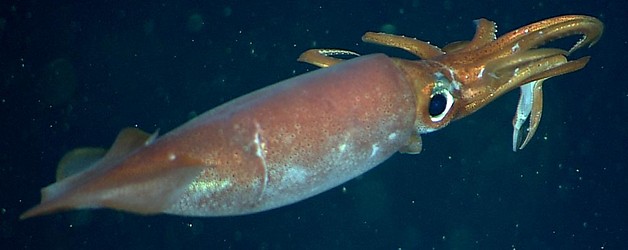
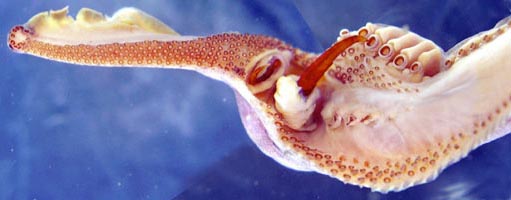
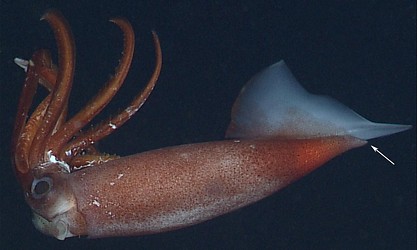



 Go to quick links
Go to quick search
Go to navigation for this section of the ToL site
Go to detailed links for the ToL site
Go to quick links
Go to quick search
Go to navigation for this section of the ToL site
Go to detailed links for the ToL site